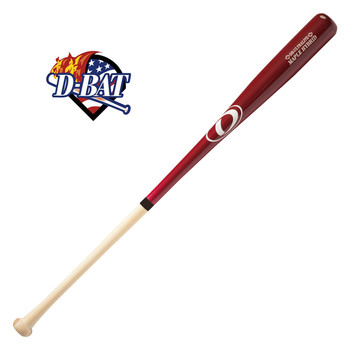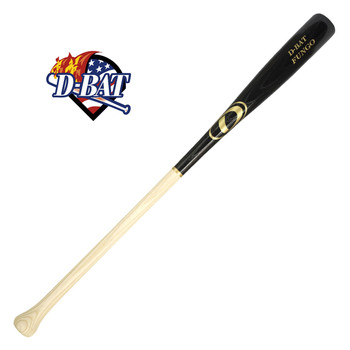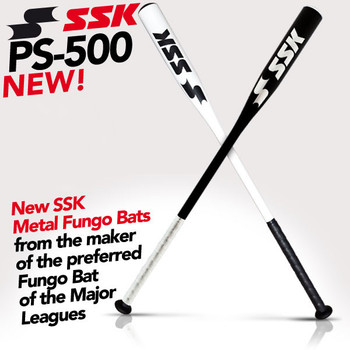Understanding and Using Fungo Bats
Fungo bats are a unique and specialized tool used in the world of baseball and softball. These bats have gained popularity among coaches and players for their ability to improve fielding skills, enhance training sessions, and add an element of fun to practice. Whether you're a coach looking to improve your team's fielding abilities or a player wanting to take your skills to the next level, understanding and using fungo bats can be a game-changer.
Below we will explore the characteristics of fungo bats, how they differ from regular bats, and the materials used in their construction. We will also delve into the typical sizes and weights of fungo bats, providing you with valuable insights to help you choose the right one for your needs.
Using a fungo bat requires proper technique and understanding. We will discuss the correct way to hit balls with a fungo bat, as well as common drills and exercises that can be performed using this tool. Additionally, we will provide safety precautions and tips to ensure a safe and enjoyable experience.
Maintaining and caring for your fungo bat is essential for its longevity and performance. We will cover the proper cleaning methods, storage techniques, and indications that it may be time to replace your fungo bat.
Lastly, choosing the right fungo bat can significantly impact your training sessions. We will discuss the factors to consider when buying a fungo bat, highlight some of the top brands in the market.
By the end you will have a comprehensive understanding of fungo bats and how to effectively use them to enhance your baseball or softball skills. So, let's dive in and unlock the full potential of these remarkable training tools!
What is a Fungo Bat: An Introduction
Fungo bats, also known as coach's bats, are specialized bats used primarily in baseball and softball for training purposes. Unlike regular game bats, fungo bats are designed specifically for coaches to hit balls to players during practice sessions.
The main purpose of a fungo bat is to facilitate fielding drills and improve players' defensive skills. By using a fungo bat, coaches can hit balls with precision and control, allowing players to practice fielding ground balls, pop flies, and line drives. This tool helps players develop their hand-eye coordination, agility, and reaction time.
Fungo bats are typically longer and lighter than regular game bats. They are often made from wood, although some models are constructed with composite materials or aluminum alloy. The lighter weight and longer length of a fungo bat allows coaches to generate more bat speed and hit the ball with better accuracy.
One important feature that distinguishes fungo bats from regular bats is their lack of a knob at the bottom. This knob-less design enables coaches to grip the bat in various positions, allowing for greater control and flexibility in hitting different types of balls. Now, not all fungos have a knobless bottom, many do in-fact, have a knob.
Overall, fungo bats serve as an invaluable tool for coaches to enhance training sessions and improve players' fielding skills. They provide a controlled and consistent way to practice fielding without relying on a pitcher, allowing players to sharpen their defensive abilities and become more confident on the field.
Characteristics of Fungo Bats
Fungo bats have several distinct characteristics that set them apart from regular game bats. Understanding these characteristics is essential for choosing the right fungo bat and using it effectively in your training sessions. Let's explore these characteristics in detail:
1. Length and Weight:
Fungo bats are typically longer and lighter than regular game bats. The length of a fungo bat will usually range from 33 to 36 inches, providing coaches with the ability to generate more bat speed and hit balls with precision. The lighter weight of fungo bats allows coaches to swing them effortlessly (less fatigue), providing consistent hits for players to practice fielding.
2. Knob-less Design:
Unlike regular bats, many fungo bats do not have a knob at the bottom. This feature allows coaches to grip the bat in various positions, enabling them to hit different types of balls with ease. The absence of a knob also gives coaches more control and flexibility in their swings.
3. Thin Handle:
Fungo bats typically have a thin handle compared to regular bats. This design allows coaches to have a comfortable grip and maneuver the bat easily while hitting balls. The thin handle provides better control and allows coaches to adjust their grip to suit different hitting techniques.
4. Barrel Size:
The barrel length of a fungo bat is usually larger than that of a regular bat. The larger barrel provides a larger hitting surface, making it easier for coaches to consistently hit balls to players during practice.
5. Material:
Fungo bats are commonly made from wood, with ash and maple being the most popular choices. Wood fungo bats offer a traditional feel and sound, providing a more authentic baseball experience. However, there are also fungo bats available made from composite materials or aluminum alloy, which offer durability and lighter weight.
6. Durability:
Fungo bats are designed to withstand the rigors of intense training sessions. They are built to be durable and long-lasting, ensuring they can withstand repeated hits without breaking or losing performance. However, it is important to properly maintain and care for your fungo bat to maximize its lifespan.
Understanding the characteristics of fungo bats will help you make an informed decision when selecting the right bat for your needs. Whether it's the length, weight, knob-less design, thin handle, barrel size, or the material used, each characteristic plays a crucial role in enhancing your training sessions and improving your fielding skills.
How to Use a Fungo Bat
Using a fungo bat requires proper technique and understanding. In this section, we will explore the correct way to hit balls with a fungo bat, common drills and exercises that can be performed using this tool, as well as safety precautions and tips to ensure a safe and enjoyable experience. Let's dive in!
Technique for Hitting Balls:
- Grip: Start by gripping the fungo bat with your dominant hand on the bottom of the handle and your non-dominant hand slightly higher up the handle. Find a grip that feels comfortable and gives you control over the bat.
- Stance: Position yourself with your feet shoulder-width apart and perpendicular to the direction you want to hit the ball. Your body should be balanced and relaxed, with your weight evenly distributed.
- Swing: Take a smooth and controlled swing, keeping your eye on the ball at all times. Use a fluid motion to generate bat speed and make contact with the ball. Remember, the goal is to hit the ball in a way that allows players to practice fielding, so focus on hitting ground balls, pop flies, or line drives.
- Placement: Aim to hit the ball to specific areas of the field, simulating realistic game situations. By varying your hits, you can help players improve their fielding skills in different scenarios.
Common Drills and Exercises using Fungo Bats:
- Ground Ball Drill: Hit ground balls to infielders to practice their fielding technique and footwork. Vary the speed and placement of the balls to challenge them.
- Pop Fly Drill: Hit pop flies to outfielders to improve their ability to track and catch high-flying balls. Start with easy catches and gradually increase the difficulty.
- Line Drive Drill: Hit line drives to both infielders and outfielders to enhance their reaction time and ability to make quick, accurate throws.
- Base Running Drill: Use the fungo bat to hit balls during simulated game situations with runners on base, helping them improve their base running instincts.
- Communication Drill: Incorporate fungo bat hits into drills that require fielders to communicate and work together, such as relay throws or double play situations.
Safety Precautions and Tips:
- Maintain a safe distance from players when hitting balls with a fungo bat to avoid accidental contact.
- Inspect the field for any obstacles or hazards that could pose a risk to players before starting fungo bat drills.
- Communicate with players and provide clear instructions to ensure everyone understands the drill and stays safe.
By following the proper technique, incorporating various drills, and prioritizing safety, you can effectively use a fungo bat to enhance training sessions and improve players' fielding skills.
Maintaining and Caring for Your Fungo Bat
Maintaining and caring for your fungo bat is crucial to ensure its longevity and optimal performance. In this section, we will discuss the proper cleaning methods, storage techniques, and indicators that it may be time to replace your fungo bat. Let's explore how to keep your fungo bat in excellent condition.
Cleaning Your Fungo Bat:
- Remove Dirt and Debris: After each use, wipe down your fungo bat with a clean cloth or towel to remove any dirt, grass, or debris. Pay close attention to the barrel and handle areas.
- Use Mild Soap and Water: For more stubborn stains or dirt, you can use a mild soap and water solution to clean your fungo bat. Apply a small amount of the solution to a cloth or sponge and gently scrub the bat. Avoid using harsh chemicals or abrasive materials that could damage the bat's surface.
- Dry Thoroughly: After cleaning, make sure to dry your fungo bat completely before storing it. Moisture can lead to damage or warping of the bat. Use a dry cloth to wipe off any excess water or moisture.
Storing Your Fungo Bat:
- Avoid Extreme Temperatures: Store your fungo bat in a place where it is protected from extreme temperatures. High heat or cold can cause the wood to expand or contract, potentially affecting the bat's performance.
- Horizontal Storage: It is recommended to store your fungo bat horizontally, preferably on a bat rack or in a bat bag designed for storage. This helps prevent any unnecessary stress on the bat and maintains its shape.
- Keep Away from Moisture: Moisture can damage the wood and lead to warping or cracking. Store your fungo bat in a dry area, away from any dampness or humidity.
- Separate from Other Bats: If you have multiple bats, it is best to store the fungo bat separately from other bats to prevent any accidental damage or contact.
When to Replace Your Fungo Bat:
- Cracks or Splintering: Inspect your fungo bat regularly for any cracks, splintering, or significant damage. If you notice any structural issues, it may be time to replace your bat.
- Decreased Performance: If you find that your fungo bat is no longer providing the desired performance or distance when hitting balls, it might be a sign that it has worn out and needs replacement.
Regular cleaning, proper storage, and timely replacement when necessary will help extend the lifespan of your fungo bat and ensure that it remains in optimal condition for effective training sessions.
Choosing the Right Fungo Bat
Choosing the right fungo bat is essential to maximize your training sessions and improve your fielding skills. In this section, we will discuss the factors to consider when buying a fungo bat, highlight some of the top brands in the market, and provide guidance on where to purchase one. Let's explore how to choose the perfect fungo bat for your needs.
Factors to Consider When Buying a Fungo Bat:
- Length and Weight: Consider the length and weight that best suits your preferences and hitting style. Longer bats provide more reach, while lighter bats offer increased bat speed. Find a balance that allows you to generate power and control.
- Material: Decide on the material that suits your preferences and performance requirements. Wood fungo bats offer a traditional feel and sound, while composite or aluminum fungo bats provide durability and lighter weight.
- Durability: Look for a fungo bat that is known for its durability. Read reviews and consider the reputation of the brand to ensure that the bat can withstand the demands of rigorous training sessions.
- Grip and Handle: Pay attention to the grip and handle of the fungo bat. Look for a comfortable grip that allows for proper control and maneuverability. Consider the thickness and material of the handle to ensure a secure and comfortable grip.
- Budget: Set a budget for your fungo bat purchase. Determine how much you are willing to spend and look for options within your price range. Remember that investing in a high-quality fungo bat can provide long-term benefits.
Top Fungo Bat Brands:
- B-Dat: Very customizable and they have great colors!
- Akadema: Good value, but not as customizable.
- Louisville Slugger: Known for their quality baseball equipment, Louisville Slugger offers a wide range of fungo bats with different materials and specifications to suit various preferences.
- Marucci: Marucci is renowned for its high-quality wood bats, and their fungo bats are no exception. They offer durable, reliable, and well-crafted fungo bats for coaches and players.
- Easton: Easton is a trusted name in the baseball and softball industry, and they offer a selection of fungo bats that combine performance, durability, and affordability.
- Rawlings: Rawlings is another reputable brand that produces quality baseball equipment, including fungo bats. They offer a range of options to cater to different needs and preferences.
Where to Buy a Fungo Bat:
- HittingStore.com; Just shop above! :)
When choosing a fungo bat, take into account the factors that are most important to you, such as length, weight, material, durability, and budget. Research different brands and read reviews to make an informed decision. By selecting the right fungo bat, you can elevate your training sessions and enhance your fielding skills.





